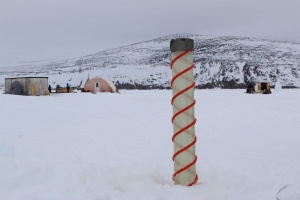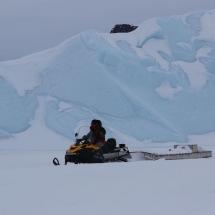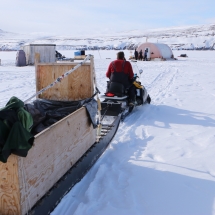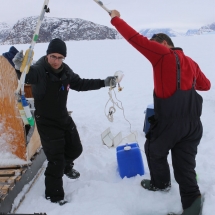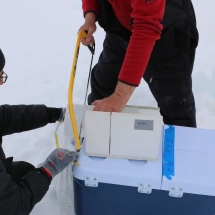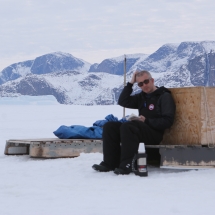Bacterioplankton closely linked to organic carbon
Prokaryotic heterotrophs play a key role in marine global carbon fluxes by way of their consumption of dissolved organic matter, respiratory CO2 production and nutrient recycling activities.
The response of heterotrophic bacteria to changes in primary production in the Arctic Ocean is essential to understand biogenic carbon flows in this area where changes occur faster than anywhere else on the planet, with temperature increasing and ice volume decreasing.
Studying how bacterioplankton respond to ice algea and phytoplankton blooms can thus have important ramifications for the fate of newly produced organic carbon.
I spent 3 weeks on the ice camp in May. During my stay, I can observe the first changes on the snow-covered ice pack. I initiate measurements of bacterial production in both ice and water samples that will be pursue by Virginie Galindo. The measurements will be used to determine how much organic matter is processed by bacteria in comparison to the organic matter produced by phytoplankton. Bioassays have also been performed to determine which nutrients is limiting for bacterial growth. Other components of the microbial loop are also investigated by counting the heterotrophic nanoflagellates (the predators of the bacteria) and the virus that can infect bacteria and lead to their lysis.
Moreover, samples have been collected to study the bacterial diversity using molecular tools. The objective is to determine the dynamic of the bacterial community during the different phases of the phytoplankton bloom and identify the bacterial species regarding the quality of the dissolved organic matter present in the environment.
Finally, samples have been preserved to isolate bacterial strains at the laboratory to describe new species and study their ecophysiology using genomic approaches.

